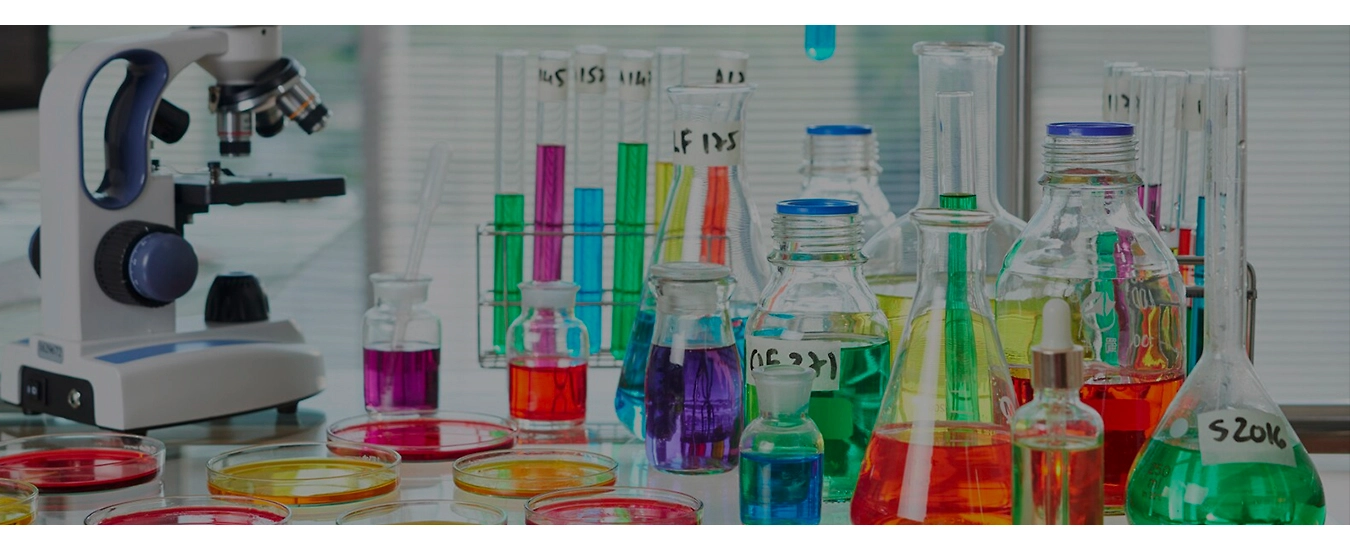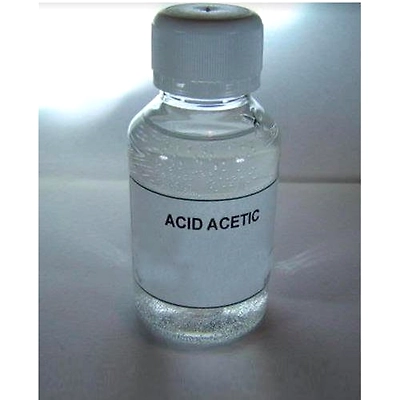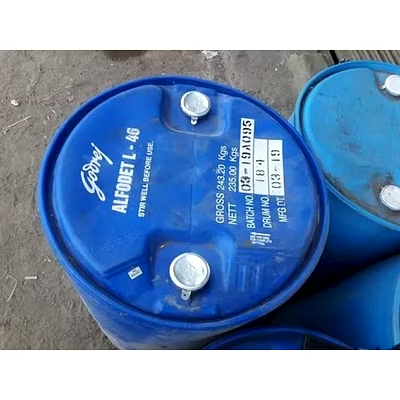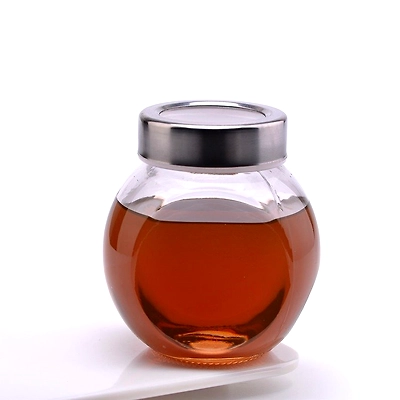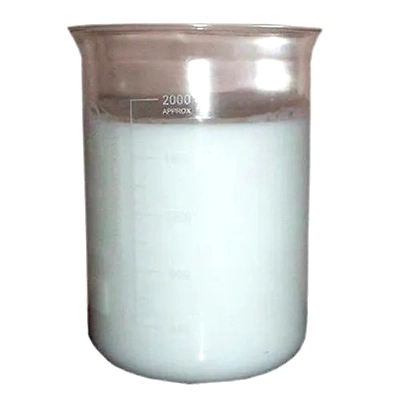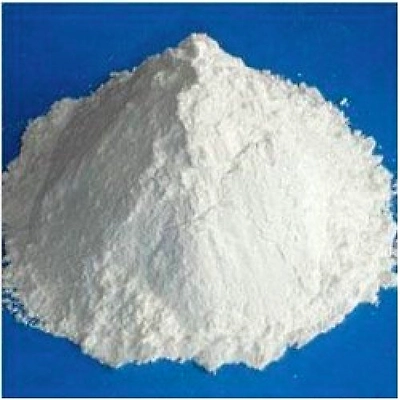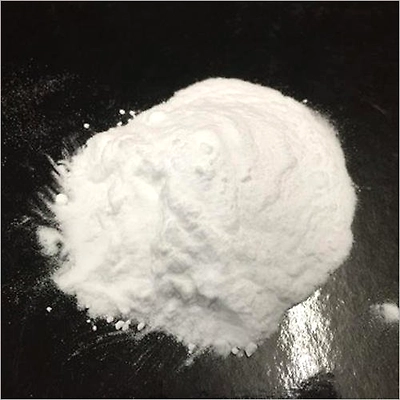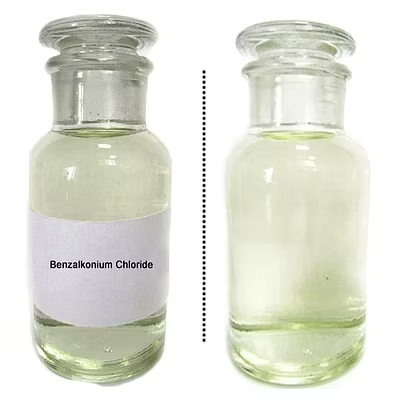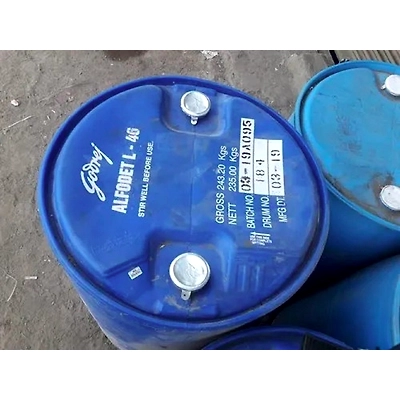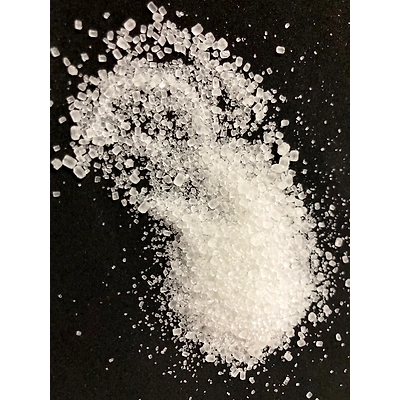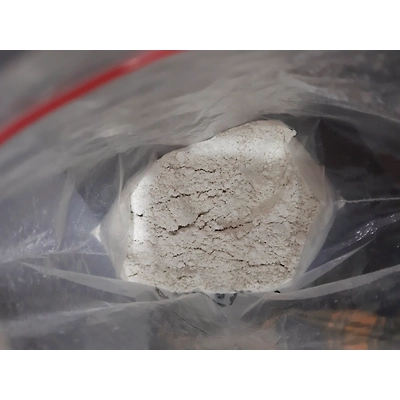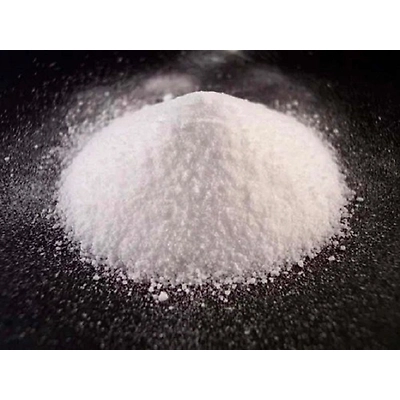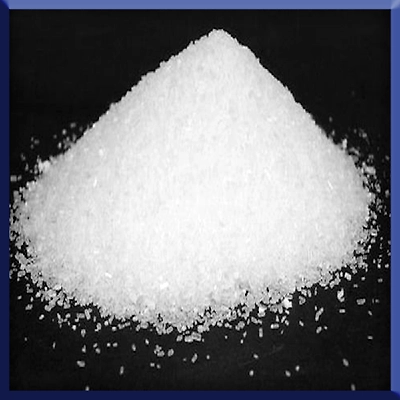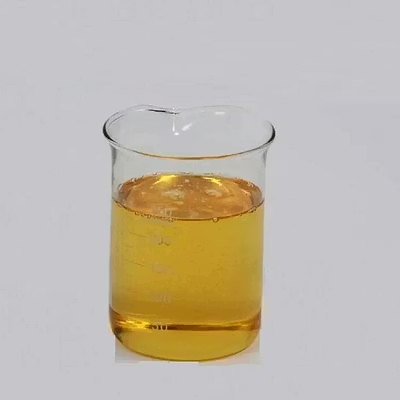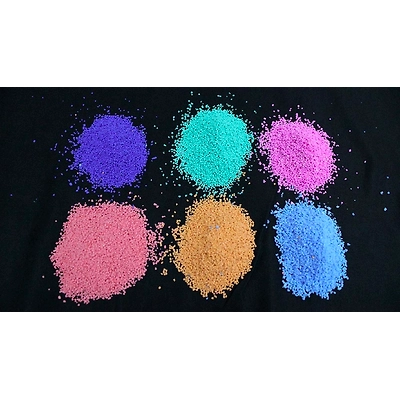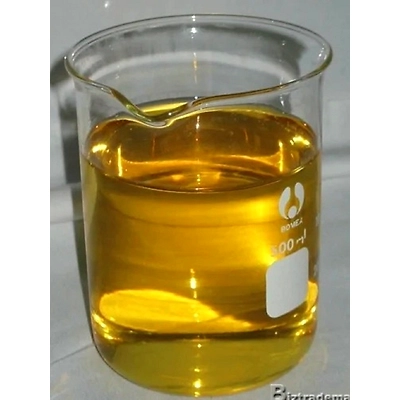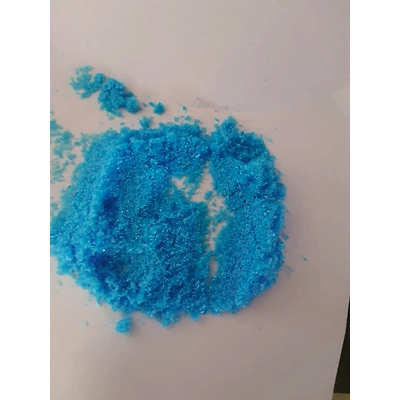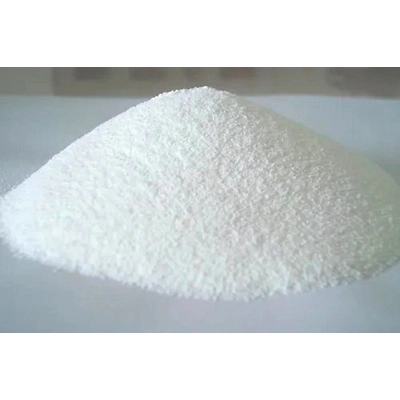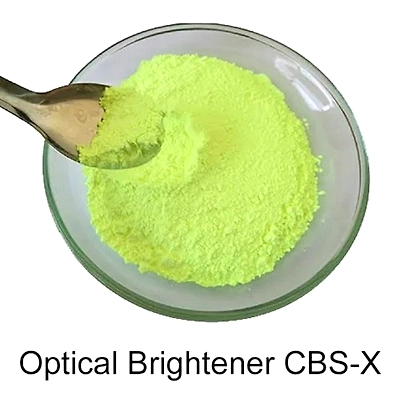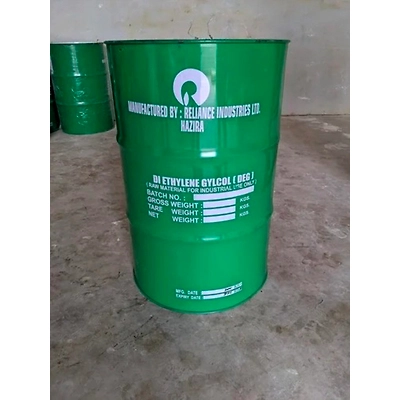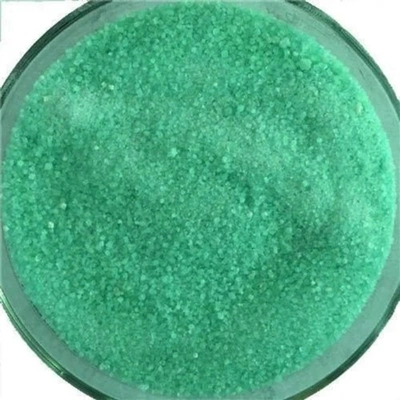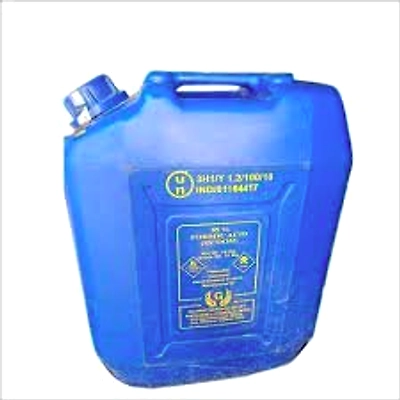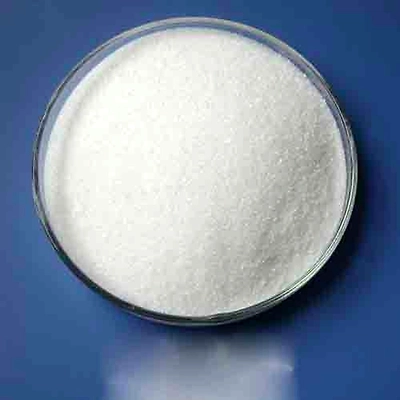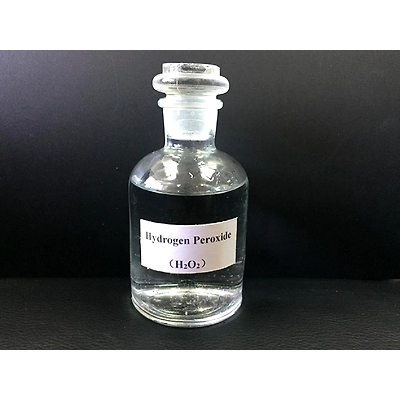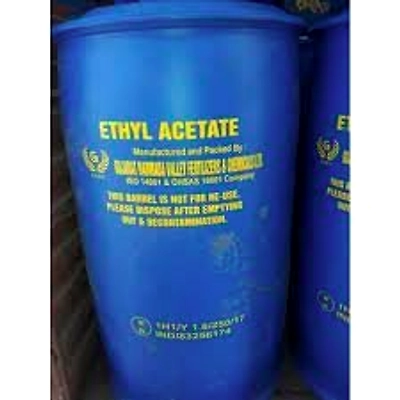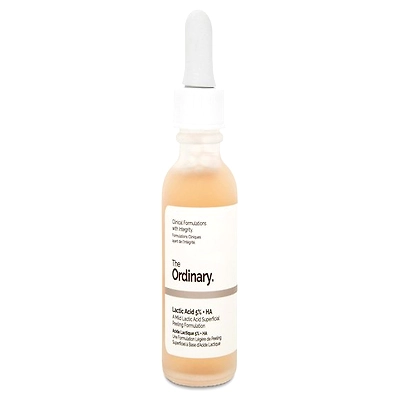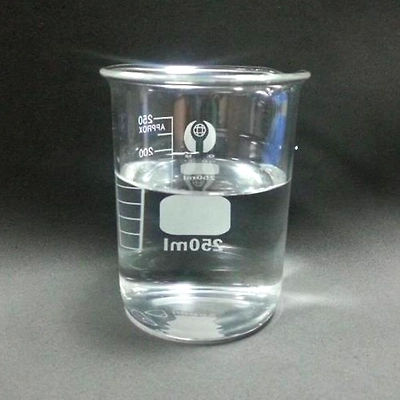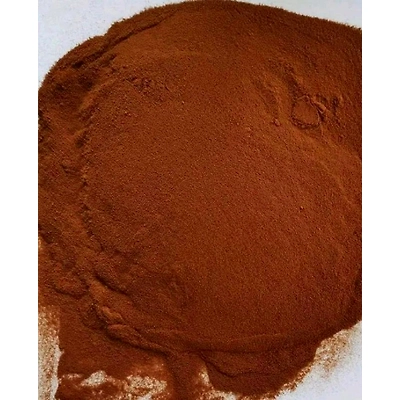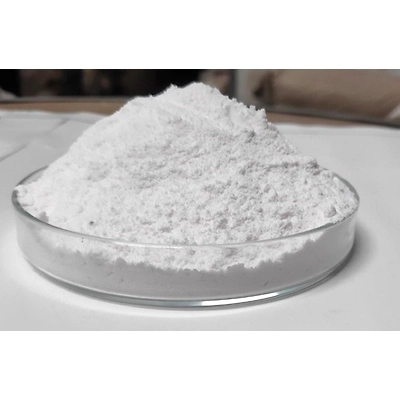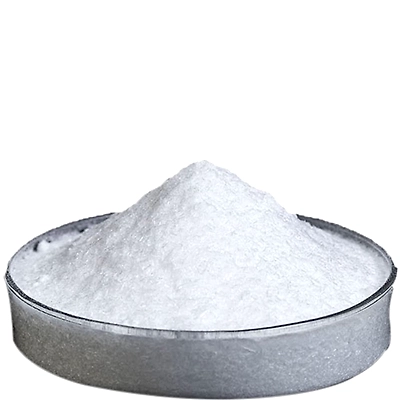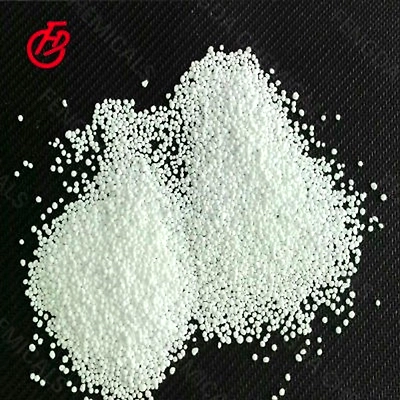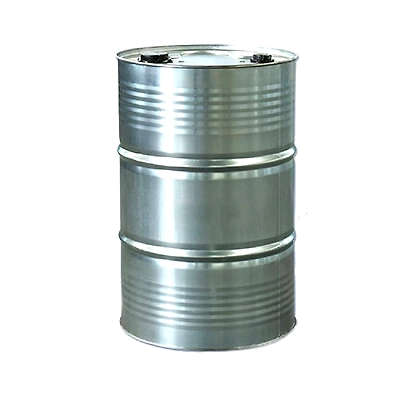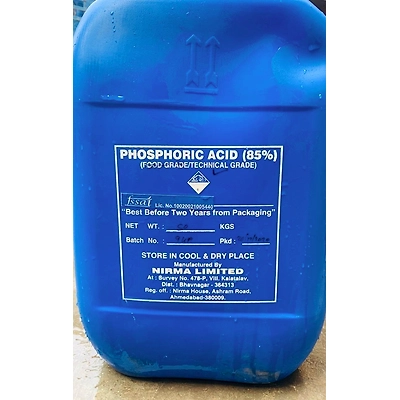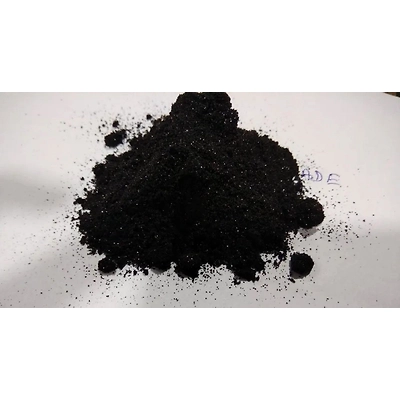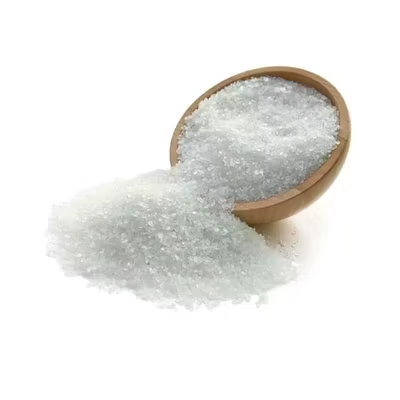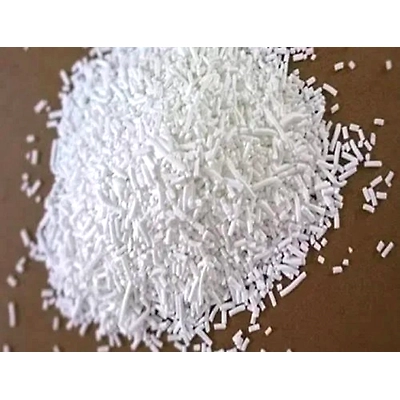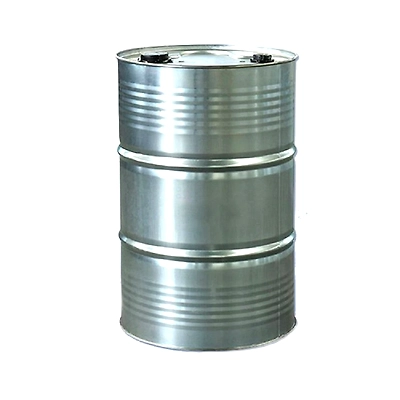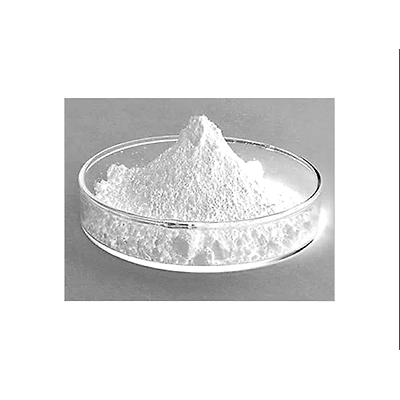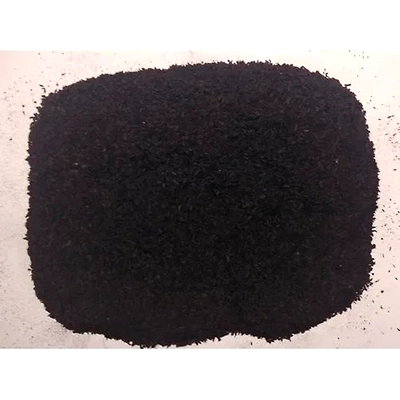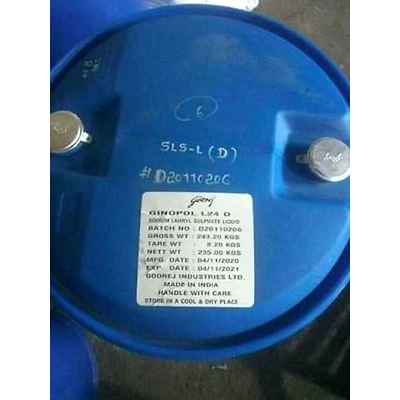Acetic Acid Glacial
Acetic Acid Glacial is a versatile chemical compound known for its strong acidity and wide-ranging applications. It is a colorless, pungent-smelling liquid with a high solubility in water.
IUPAC Name:Acetic Acid
Common Name:
Glacial Acetic Acid
Ethylic Acid
Methanecarboxylic Acid
Appearance:Acetic Acid Glacial appears as a colorless, clear liquid with a sharp, vinegar-like odor.
Chemical Formula:CH3COOH
Molecular Weight:60.052 g/mol
Applications:
Chemical Manufacturing: Acetic Acid Glacial is used as a crucial raw material in the production of various chemicals, including acetate esters, acetic anhydride, and acetate fibers. It plays a vital role in the synthesis of pharmaceuticals, dyes, and perfumes.
Food Industry: In the food industry, it serves as a food preservative and flavor enhancer. It is a key component in the production of vinegar, imparting its characteristic sour taste.
Laboratory and Research: Laboratories utilize Acetic Acid Glacial for analytical purposes, such as pH adjustment and titration. It is commonly used in molecular biology and histology procedures.
Textile Industry: Acetic Acid Glacial is employed in textile manufacturing for dyeing and finishing processes, assisting in achieving vibrant and colorfast textiles.
Cleaning and Sanitization: It finds use in household cleaning products due to its effective disinfectant properties. Industrial cleaning processes also rely on Acetic Acid Glacial for cleaning and descaling tasks.
Packing Size- 30 Kg
Packing type - HDPE Carboy
Alpha Olefin Sulphonates (Aos) Paste
Alpha Olefin Sulfonate (AOS) Paste is a viscous and semi-solid substance that serves as an anionic surfactant. It is widely used in the production of various detergents, cleaning products, and personal care formulations.
Applications:
Detergents and Cleaning Products: AOS Paste is a key ingredient in the formulation of various detergents, such as laundry detergents, dishwashing detergents, and industrial cleaning products. It contributes to the product's cleaning and foaming properties.
Personal Care Products: It is used in personal care products, including shampoos, body washes, and facial cleansers, as a foaming agent and surfactant.
Industrial and Institutional Cleaning: AOS Paste is employed in industrial and institutional cleaning formulations for its cleaning and foaming properties.
Textile and Leather Processing: It is used in the textile and leather industry for its emulsifying and cleaning abilities.
Emulsification: AOS Paste is used in various applications as an emulsifier to mix oil and water-based ingredients in cosmetic and industrial formulations.
Oil and Gas Industry: In the oil and gas sector, it may be used in drilling fluids as a dispersant and deflocculant.
Packing Size: 220 Kg
Packing Type: HDPE Drum
Acid Slurry 90% (Labsa)
Acid Slurry, also known as Linear Alkyl Benzene Sulphonic Acid (LABSA), is a versatile and essential chemical compound used in various industries. It is a viscous, brownish liquid with excellent surfactant properties, making it an indispensable ingredient for numerous applications.
IUPAC Name:Linear Alkyl Benzene Sulphonic Acid (LABSA)
Other Name or Common Name:
Acid Slurry
LABSA
Alkylbenzene Sulfonic Acid
Appearance:Acid Slurry typically appears as a brownish, viscous liquid.
Chemical Formula: The chemical formula of Acid Slurry (LABSA) is C6H4(SO3H)(CH2)nCH3, where 'n' represents the length of the alkyl chain.
Applications:
Detergent Manufacturing: Acid Slurry is a fundamental raw material in the production of various detergents, including dishwashing liquids, laundry detergents, and industrial cleaners. It aids in removing stubborn stains and grease effectively.
Textile Industry: In the textile sector, Acid Slurry is used for textile scouring, dyeing, and finishing processes. It helps in achieving optimal wetting and penetration of dyes and chemicals.
Household Cleaning Products: Many household cleaning products, such as floor cleaners and toilet bowl cleaners, contain Acid Slurry for its cleaning and foaming properties.
Industrial Cleaners: Industrial cleaning applications, including degreasing and equipment cleaning, benefit from the emulsifying and detergent capabilities of Acid Slurry.
Agriculture: Acid Slurry is used in agriculture as a wetting agent and emulsifier for agrochemical formulations.
Packing Size: 250 KG
Packing Type: HDPE Barrel
Alphox 200
Alphox 200 is an ethylene oxide condensate of alkyl phenol. It is a pale colored liquid solution in water, vegetable Oils, alcohol, glycol ether, chloroform and Insoluble in mineral Oil and Ketone. Alphox 200 is a versatile chemical compound that finds wide application in various industries. It is a highly effective surfactant and emulsifier, known for its excellent performance in diverse applications. Application
TEXTILE -Alphox 200 is useful as a powerful wetting and scouring agent in many textiles Processing applications. It also aids bleaching and desizing action due to excellent wetting actions. It is also useful in dye leveling and kier boiling operations.
AGRICULTURE -Alphox 200 is useful as a non-ionic component along with anionic surfactant for formulation of emulsifiers for pesticidal sprays.
LEATHER -Alphox 200 is useful as an ingredient in the formulation of tanning agents.
PAINTS -Alphox 200 is useful as pigment wetting and as an emulsifier in paint formulation.
DETERGENTS -Alphox200 is useful at low concentration for formulation with anionics to obtain improved detergency. Blended with quarterly ammonium compounds it can yield germicidal cleaners for institutional cleaning. It can also be formulated as a liquid detergent with softeners.
METAL CLEANING-Alphox 200 is a Powerful detergent at low concentration. Therefore, it is useful in the removal of heavy grease and industrial metal cleaning.
Packing Size:210 Kg & 50 Kg
Packing Type:HDPE Drum & Carboy
Amino Acid 50 & 80% Soya Base
Amino Acids are organic compounds that serve as the building blocks of proteins and play essential roles in various biological processes. They are critical for the structure and function of proteins and enzymes in living organisms. Appearance:Cream to Brown Colour Applications:
Protein Synthesis: Amino acids are used by living organisms to build proteins through a process known as protein synthesis. Each amino acid contributes to the structure and function of the resulting protein.
Nutrition: Amino acids are essential nutrients in the human diet. They can be obtained from dietary sources and are required for various bodily functions, including muscle growth, enzyme production, and overall health.
Pharmaceuticals: Amino acids are used in the pharmaceutical industry for the production of medications and supplements, including amino acid-based nutritional supplements and drugs.
Research: Amino acids are commonly used in scientific research to study protein structure, function, and interactions. They are essential reagents in molecular biology and biochemistry.
Food and Beverage: Amino acids are used as food additives in the food and beverage industry to enhance flavor, improve taste, and serve as flavor enhancers. They are often found in products like savory snacks and condiments.
Packing Size: 25kg Packing Type: Bag Packing
Alpha Olefin Sulphonates (Aos) Powder
Alpha Olefin Sulphonate Powder, also known as AOS powder, is a versatile and high-performance surfactant used in various industries. It is a white, free-flowing powder that exhibits exceptional cleaning and foaming properties. Our Alpha Olefin Sulphonate Powder is manufactured to meet stringent quality standards, ensuring its effectiveness and versatility for a wide range of applications. Applications:
1. Detergent and Cleaning Products:
Alpha Olefin Sulphonate Powder is a key ingredient in the production of various detergents, including laundry detergents, dishwashing liquids, and industrial cleaners.
It excels in removing dirt, grease, and stains effectively.
2. Personal Care Products:
It is used in the formulation of shampoos, body washes, and liquid soaps, providing rich lather and cleansing properties.
3. Textile Industry:
In textiles, it is utilized for textile scouring, dyeing, and finishing processes to achieve optimal wetting and penetration of dyes and chemicals.
4. Agriculture:
It is employed in agriculture as a wetting agent, dispersant, and emulsifier in agrochemical formulations.
5. Oil and Gas Industry:
Alpha Olefin Sulphonate Powder is used in drilling fluids to enhance drilling efficiency, mud rheology, and wellbore stability.
6. Water Treatment:
It aids in coagulation and flocculation processes, helping to remove impurities and pollutants from water.
7. Industrial and Institutional Cleaning:
Industrial and institutional cleaning applications, such as degreasing and equipment cleaning, benefit from its emulsifying and cleaning properties.
Packing Size:25 Kg Packing Type:HDPE Bag
Boric Acid
Boric Acid is a weak, monobasic Lewis acid of boron. It is a white, crystalline solid that is soluble in water and known for its mild antiseptic and antifungal properties. It is a natural substance that is generally safe for most people to use, but it is important to follow the manufacturer's instructions carefully when using boric acid products.
IUPAC Name: Boric Acid
Other Name or Common Name: Orthoboric Acid
Appearance: White crystalline powder or solid
Chemical Formula: H3BO3
Molecular Weight: Approximately 61.83 g/mol
Applications:
Antiseptic and Antifungal: Boric acid is commonly used as an antiseptic and antifungal agent for various purposes, including treating minor cuts, burns, and skin infections.
Preservative: It is used as a preservative in some cosmetic and personal care products, including eye drops and saline solutions.
Insecticides: Boric acid is used in some insecticides and pesticides to control pests like ants, roaches, and silverfish. It works by disrupting their digestive systems.
Flame Retardant: It is utilized as a flame retardant in certain textiles and cellulose-based materials.
Metallurgy: In metallurgical processes, boric acid is used as a flux to facilitate the removal of impurities and improve the quality of metals.
Packing Size: 25 kg Bag
Packing Type: HDPE bag
Benzalkonium Chloride 50% & 80%
Benzalkonium Chloride is a quaternary ammonium compound and is known for its antimicrobial and disinfectant properties. It is widely used as a biocidal agent to kill or inhibit the growth of bacteria, viruses, and fungi. IUPAC Name: N,N-dimethyl-N-dodecyl-N-(2-hydroxyethyl)ammonium chloride Appearance:Colorless to pale yellow solution
Applications:
Disinfectants and Antiseptics: Benzalkonium Chloride is used in various disinfectant and antiseptic products, including hand sanitizers, surface disinfectants, and wound antiseptics. It effectively kills a broad spectrum of microorganisms.
Preservatives: It is employed as a preservative in a wide range of personal care and pharmaceutical products, including eye drops, nasal sprays, and ophthalmic solutions.
Biocidal Applications: Benzalkonium Chloride is used in industrial and healthcare settings to sanitize equipment, surfaces, and instruments.
Swimming Pool Water Treatment: It is used to control algae and bacteria in swimming pool water.
Pharmaceuticals: It is used in various pharmaceutical formulations as a disinfectant and preservative, particularly in multi-dose eye drops and nasal solutions.
Packing Size: 50kg Packing Type: HDPE Carboy
Alpha Olefin Sulphonates (Aos) Liquid
AOS Liquid, short for Alpha Olefin Sulphonate Liquid, is a versatile and high-performance surfactant renowned for its exceptional cleaning and foaming properties. It is a clear or slightly hazy liquid that finds widespread use in various industries. Our AOS Liquid is manufactured to the highest quality standards, ensuring its effectiveness and reliability for a wide range of applications.
Applications:
1. Detergent and Cleaning Products:
AOS Liquid is a fundamental ingredient in the formulation of various detergents, including laundry detergents, dishwashing liquids, and industrial cleaners.
It excels in removing dirt, grease, and stains effectively.
2. Personal Care Products:
It is used in the production of shampoos, body washes, and liquid soaps, providing rich lather and effective cleansing properties.
3. Textile Industry:
In textiles, AOS Liquid is utilized for textile scouring, dyeing, and finishing processes to achieve optimal wetting and penetration of dyes and chemicals.
4. Agriculture:
It serves as a wetting agent, dispersant, and emulsifier in agrochemical formulations for improved effectiveness.
5. Oil and Gas Industry:
AOS Liquid is a valuable component in drilling fluids, enhancing drilling efficiency, mud rheology, and wellbore stability.
6. Water Treatment:
It aids in coagulation and flocculation processes, facilitating the removal of impurities and pollutants from water.
7. Industrial and Institutional Cleaning:
Industries and institutions benefit from its emulsifying and cleaning properties, particularly in tasks such as degreasing and equipment cleaning.
Packing Size: 235 Kg Packing Type: HDPE Drum
Aluminium Sulphate
Aluminum Sulfate, also known as alum, is a versatile chemical compound with numerous industrial and water treatment applications. It is a white crystalline solid or powder, known for its ability to clarify water and play a crucial role in various chemical processes.
IUPAC Name:Aluminum Sulfate
Other Name or Common Name:
Alum
Alum Powder
Appearance:Aluminum Sulfate typically appears as a white crystalline solid or powder. In water treatment applications, it is often used in a liquid form.
Chemical Formula:The chemical formula for Aluminum Sulfate is Al2(SO4)3.
Molecular Weight:The molecular weight of Aluminum Sulfate is approximately 342.15 g/mol.
Applications:
Water Treatment: Aluminum Sulfate is widely used as a coagulant in water treatment processes to clarify and purify water. It aids in the removal of impurities, turbidity, and suspended particles, making water safe for consumption and industrial use.
Paper Manufacturing: It is employed in the paper industry to improve paper formation and strength. Aluminum Sulfate is used as a sizing agent and as a means to control the pH of paper pulp.
Textile Industry: In textiles, Aluminum Sulfate is used as a mordant in dyeing and printing processes to fix dyes onto fabrics effectively.
Construction: It is used in construction applications, such as as a flocculating agent in cement and concrete production.
Soil Conditioner: In agriculture, it is utilized as a soil conditioner and pH adjuster to enhance soil structure and nutrient availability to plants.
Deodorants: Some deodorant products contain Aluminum Sulfate to help control odor and perspiration.
Fire Retardants: It is used as a fire retardant in some fire extinguishing products and flame-resistant materials.
Chemical Industry: Aluminum Sulfate is employed in various chemical processes and as a catalyst in certain reactions.
Packing Size: 50 Kg
Packing Type: HDPE Bag
Ammonium Sulphate(Off White)
Ammonium sulfate (off white) is a variation of ammonium sulfate, a chemical compound that is typically off-white or light gray in color. Like standard ammonium sulfate, it is used in various industrial, agricultural, and laboratory applications.
IUPAC Name: Diammonium sulfate
Other Name or Common Name: Ammonium sulphate (off white)
Appearance: Off-white or light gray crystalline solid
Chemical Formula: (NH4)2SO4
Molecular Weight: 132.14 g/mol
Applications:
Agriculture: Used as a nitrogen fertilizer, ammonium sulfate (off white) provides essential nitrogen and sulfur nutrients for plant growth. It is particularly effective in alkaline soils and helps to lower soil pH.
Industrial Applications:
Water Treatment: It is employed in water treatment processes to precipitate heavy metals and reduce the concentration of certain contaminants.
Textiles: In the textile industry, it can serve as a flame retardant and dye-fixing agent for fabrics.
Chemical Manufacturing: Used as a reagent in various chemical reactions and processes.
Fire Extinguishers: Ammonium sulfate (off white) can be included in some dry chemical fire extinguishers as a fire-suppressing agent.
Laboratory and Research: In laboratory settings, ammonium sulfate (off white) is used for various purposes, including protein precipitation, chemical reactions, and analytical techniques.
Food Industry: While its use in the food industry has decreased over time, it has been used as an acidity regulator or dough conditioner in certain food products.
Pharmaceuticals: In pharmaceutical manufacturing, ammonium sulfate (off white) may be used in some processes for protein purification and crystallization.
Packing Size: 50kg
Packing Type: HDPE Bag
Ammonium Sulphate(Pure White )
Ammonium Sulphate is an inorganic compound with the formula (NH4)2SO4. It is an inorganic salt commonly used in various industries due to its versatile properties. It is Composed of ammonium cation (NH4+) and sulfate anion (SO42-), and is highly soluble in water .Ammonium sulfate is a white, water-soluble powder that is used as a fertilizer and in other industrial applications. It is a good source of nitrogen and sulfur, two important nutrients for plant growth. Ammonium sulfate can be applied to soil directly or dissolved in water and applied as a liquid fertilizer. It is important to follow the manufacturer's directions for application rates, as too much ammonium sulfate can damage plants.
IUPAC Name: Diammonium sulfate
Other Name or Common Name: Ammonium sulphate
Appearance: White crystalline solid
Chemical Formula: (NH4)2SO4
Molecular Weight:132.14 g/mol
Applications:
Agriculture: Used as a nitrogen fertilizer to provide essential nutrients for plant growth, particularly in alkaline soils. It also helps lower soil pH.
Industrial Applications:
Water Treatment: Employed to precipitate heavy metals and reduce water contaminants.
Textiles: Used as a flame retardant and dye-fixing agent in the textile industry.
Chemical Manufacturing: Used as a reagent in various chemical processes.
Fire Extinguishers: Included in some dry chemical fire extinguishers as a fire-suppressing agent.
Laboratory and Research: Utilized for protein precipitation, chemical reactions, and analytical techniques in laboratory settings.
Food Industry: Occasionally used as an acidity regulator or dough conditioner in food products, although its use has decreased with the availability of other food-grade additives.
Pharmaceuticals: May be used in some pharmaceutical processes for protein purification and crystallization.
Packing Size: 50kg
Packing Type: HDPE Bag
Cetyl Alcohol
Cetyl Alcohol is a fatty alcohol that is often used as an emollient, thickening agent, and emulsifier in cosmetic and personal care products. It is valued for its soothing and moisturizing properties.
IUPAC Name: Hexadecan-1-ol
Other Name or Common Name:Cetyl Alcohol
Appearance: white, waxy solid or flakes at room temperature.
Chemical Formula: C16H34O
Molecular Weight: 242.45 g/mol
Applications:
Cosmetics and Personal Care: Cetyl Alcohol is a common ingredient in creams, lotions, and other cosmetic products. It functions as an emollient, helping to soften and hydrate the skin. It also acts as a thickener to provide desirable texture and consistency to products.
Hair Care Products: It is used in hair conditioners and styling products to improve the texture and manageability of hair. It can help reduce frizz and static electricity.
Pharmaceuticals: In pharmaceutical formulations, Cetyl Alcohol is used as a stabilizer and thickener for various topical medications and creams.
Lubricants: It can be found in some industrial and automotive lubricants, providing lubricating properties.
Food and Beverage Industry: In some cases, Cetyl Alcohol is used as a food additive, particularly in the manufacturing of chocolates and confectionery products.
Packing Size: 25kg Packing Type: HDPE Bag
Borax Decahydeate
Borax Decahydrate, also known as sodium tetraborate decahydrate, is a naturally occurring mineral compound that is composed of sodium, boron, oxygen, and water. It is typically found as colorless, white, or light gray crystals.
IUPAC Name: Sodium tetraborate decahydrate
Other Name or Common Name: Borax Decahydrate is commonly known simply as "borax."
Appearance: Colorless, white, or light gray crystalline solid
Chemical Formula: Na2B4O710H2O
Molecular Weight:381.37 g/mol
Applications:
Household Cleaning: Borax Decahydrate is widely used as a household cleaner and laundry booster. It helps to remove stains, deodorize, and soften water in washing machines.
Insecticides: It can be used as an ingredient in some insecticides to control pests like ants and cockroaches.
Preservative: In the preservation of wood, borax is used as a natural and eco-friendly alternative to chemical preservatives. It can help protect wood against decay and insect infestation.
Flame Retardant: Borax is utilized in the manufacturing of flame-resistant materials, including certain textiles and fire-resistant coatings.
Metallurgy: In metallurgical processes, borax is employed as a flux to facilitate the removal of impurities and improve the quality of metals.
Glass Production: It is used in the glass industry to improve the strength and clarity of glass products.
Packing Size: 50kg Packing Type: HDPE Bag
Citric Acid Monohydrate
Citric Acid Monohydrate is a weak organic acid and a natural preservative. It is a crystalline compound derived from citric acid and is commonly used in various applications.
IUPAC Name: 2-Hydroxypropane-1,2,3-tricarboxylic acid monohydrate
Other Name or Common Name:Citric Acid
Appearance: Citric Acid Monohydrate appears as colorless or translucent crystals.
Chemical Formula: C6H8O7H2O
Molecular Weight:210.14 g/mol
Applications:
Food and Beverage Industry: Citric Acid Monohydrate is widely used as an acidulant and flavoring agent in the food and beverage industry. It adds a tart or sour taste to a variety of products, including soft drinks, candies, jams, jellies, and baked goods.
Pharmaceuticals: It is used in pharmaceutical formulations, including effervescent tablets and solutions, where its acidity and effervescence are beneficial.
Cosmetics and Personal Care: Citric Acid Monohydrate is used in cosmetics and personal care products as a pH adjuster, chelating agent, and exfoliant. It helps to balance the pH of skincare products and aids in the removal of dead skin cells.
Cleaning Products: It is used in cleaning products, such as descaling agents, due to its ability to dissolve mineral deposits, limescale, and rust.
Water Softening: Citric Acid Monohydrate can be used to regenerate ion-exchange resins in water softening systems, reducing the hardness of water by removing calcium and magnesium ions.
Industrial Applications: In various industrial processes, Citric Acid Monohydrate can act as a chelating agent to control metal ion content, such as in the textile and metalworking industries.
Packing Size: 25kg Packing Type: HDPE Bag
Coca Diethenol Amide (Cdea)
Coco Diethanol Amide (CDEA) is a nonionic surfactant and viscosity-enhancing agent. It is derived from coconut oil and is used in various personal care and cleaning products for its foaming, emulsifying, and thickening properties.
IUPAC Name:
Other Name or Common Name: Coco Diethanol Amide is commonly known by its abbreviation, "CDEA."
Appearance:Pale yellow liquid.
Chemical Formula:
Molecular Weight:
Applications:
Cosmetics and Personal Care: CDEA is commonly used in shampoos, conditioners, body washes, and other personal care products to enhance foaming and stabilize emulsions. It also contributes to the viscosity and texture of these products.
Cleaning Products: It is used in various cleaning products, including dishwashing liquids, laundry detergents, and multi-purpose cleaners, to improve foaming and cleaning effectiveness.
Industrial Applications: CDEA finds applications in industrial settings, such as in the formulation of cutting fluids, metalworking fluids, and lubricants.
Textile Industry: In the textile industry, CDEA may be used as a leveling agent and emulsifier in dyeing processes.
Agriculture: CDEA is sometimes used in agricultural formulations, including herbicides and pesticides, for its emulsifying properties.
Paints and Coatings: In paints and coatings, CDEA can serve as a coalescing agent and thickening agent, contributing to the stability and consistency of the formulations.
Packing Size: 50kg Packing Type: Carboy
Detergent Speckles
Detergent Speckles are small, colorful granules or specks incorporated into detergent formulations. They serve both a functional and aesthetic purpose in laundry and cleaning products.
Common Name:
Detergent Granules
Laundry Speckles
Detergent Particles
Appearance:Detergent Speckles are small, solid granules or specks that come in various colors, shapes, and sizes.
Applications:
Aesthetic Appeal: Detergent Speckles are primarily used to enhance the visual appeal of laundry detergents and cleaning products. They come in a variety of colors and shapes, adding a decorative aspect to the product and making it more attractive to consumers.
Functional Role: While the primary role is aesthetic, these speckles can also serve a functional purpose by assisting in the uniform distribution of detergent within the wash load. This can help ensure even cleaning and stain removal.
Branding and Product Differentiation: Detergent speckles are often used by manufacturers to differentiate their products from competitors, contributing to brand identity. Packing Size: 25 Kg Packing Type: HDPE Bag
Cocamidopropyl Betaine (Capb)
Coco Amidopropyl Betaine (CAPB) is a synthetic amphoteric surfactant derived from coconut oil. It is known for its mild and gentle cleaning properties, making it a common ingredient in personal care and cleaning products.
Applications:
Personal Care Products: CAPB is extensively used in personal care products, including shampoos, conditioners, body washes, and hand soaps. It serves as a mild and effective surfactant, contributing to the foaming, cleansing, and conditioning properties of these products.
Baby Care Products: Due to its mild and gentle nature, CAPB is often included in baby shampoos, baby washes, and other baby care products.
Cosmetics: It can be found in various cosmetic formulations, such as facial cleansers, makeup removers, and skin cleansers, to enhance their cleansing properties.
Household Cleaning Products: CAPB is used in household cleaning products like dishwashing detergents and all-purpose cleaners for its ability to effectively remove grease and dirt.
Industrial Applications: It is used in various industrial and institutional cleaning products where mildness and cleaning effectiveness are required.
Textile and Leather Industry: CAPB may be used as a cleaning and wetting agent in the textile and leather processing industry.
Packing Size: 50kg Packing Type: HDPE Carboy
Copper Sulphate 24%
Copper Sulfate Pentahydrate, also known as cupric sulfate pentahydrate, is a versatile and widely used chemical compound with a range of applications in agriculture, industry, and laboratories. It is a blue crystalline solid or powder that contains five water molecules in its structure, making it a hydrated form of copper sulfate.
IUPAC Name:Copper(II) Sulfate Pentahydrate
Common Name:
Cupric Sulfate Pentahydrate
Blue Vitriol (for anhydrous copper sulfate)
Appearance:Copper Sulfate Pentahydrate appears as blue, transparent, or translucent crystals. The crystals are often small and rhombic in shape.
Chemical Formula:The chemical formula for Copper Sulfate Pentahydrate is CuSO45H2O, indicating that it contains five water molecules (pentahydrate) in addition to copper sulfate.
Molecular Weight:The molecular weight of Copper Sulfate Pentahydrate is approximately 249.68 g/mol.
Applications:
Agriculture: Copper Sulfate Pentahydrate is widely used in agriculture as a fungicide and algaecide. It is applied to crops to control fungal diseases and as an aquatic herbicide to manage algae in water bodies.
Electroplating: In electroplating processes, Copper Sulfate Pentahydrate is employed to deposit a layer of copper onto various objects, providing corrosion resistance and an attractive finish.
Textile Industry: It is used in the textile industry as a mordant in dyeing processes to fix dyes onto fabrics effectively.
Chemical Industry: Copper Sulfate Pentahydrate serves as a source of copper ions in various chemical reactions and is used in the synthesis of other chemicals and compounds.
Laboratory and Research: In laboratories, it is used for various chemical analyses and experiments.
Animal Nutrition: In animal feed, Copper Sulfate Pentahydrate is included as a source of dietary copper, which is essential for the health of livestock.
Preservative: It is utilized as a preservative in wood products and as an antimicrobial agent in swimming pools.
Water Treatment: Copper Sulfate Pentahydrate is used in water treatment to control algae and aquatic plants in ponds and reservoirs.
Packing Size: 50 Kg Packing Type: HDPE Bag
Calcium Chloride
Calcium Chloride is an inorganic chemical compound composed of calcium and chlorine ions. It is a white crystalline solid at room temperature and is highly soluble in water. Calcium chloride is known for its hygroscopic properties, meaning it can absorb moisture from the air.
IUPAC Name: Calcium Chloride
Other Name or Common Name: Calcium chloride is commonly referred to by its chemical name.
Appearance: White crystalline solid
Chemical Formula: CaCl2
Molecular Weight: Approximately 110.98 g/mol
Applications:
De-icing and Anti-icing: Calcium chloride is widely used for de-icing roads and highways during winter to melt ice and snow. It is also used as an anti-icing agent to prevent the formation of ice on surfaces.
Dust Control: In arid and dusty environments, calcium chloride is applied to roads and unpaved surfaces to control dust by attracting moisture from the air and binding fine particles together.
Concrete Accelerator: In construction, calcium chloride is used as a concrete accelerator, as it can speed up the setting and curing of concrete.
Desiccant: Calcium chloride is used as a desiccant in various applications, including drying air in industrial processes, protecting sensitive equipment from humidity, and reducing moisture in packaging.
Food Additive: It is used as a food additive (E509) in the food industry to enhance firmness in canned fruits and vegetables, as well as to help maintain the texture of certain dairy products.
Oil and Gas Industry: Calcium chloride is used in the oil and gas industry for various purposes, including drilling fluids, well completion, and hydraulic fracturing (fracking) operations.
Packing Size: 50kg Packing type: HDPE Bag
Boron 20%
Disodium Octaborate Tetrahydrate is a boron-containing chemical compound used in various applications, including wood preservation and as an insecticide. It is a white, crystalline solid that contains boron, sodium, and oxygen atoms.
IUPAC Name: Disodium Octaborate Tetrahydrate
Other Name or Common Name: Disodium Octaborate Tetrahydrate is sometimes referred to as "DOT" or "Borax Boron."
Appearance: White crystalline powder or solid
Chemical Formula: Na2B8O134H2O
Molecular Weight: Approximately 381.28 g/mol
Applications:
Wood Preservation: Disodium Octaborate Tetrahydrate is used to protect wood against decay, fungi, and insect infestation. It is commonly applied as a wood preservative in construction and building materials.
Insecticide: It is utilized as an insecticide and pesticide to control wood-boring insects, such as termites and wood-destroying beetles.
Fire Retardant: In some applications, Disodium Octaborate Tetrahydrate is used as a fire retardant in cellulose-based materials, providing flame resistance.
Textile Fireproofing: It can be used in textiles to enhance their fire resistance properties.
Fungicide: Disodium Octaborate Tetrahydrate is used as a fungicide in various applications, including agriculture and wood preservation, to prevent fungal growth.
Packing Size: 25kg Packing Type: HDPE Bag
Caustic Soda Flakes
Sodium Hydroxide, commonly known as caustic soda or lye, is a highly caustic and alkaline chemical compound. It is a white, solid substance at room temperature and is highly soluble in water. Sodium hydroxide is known for its strong alkaline properties.
IUPAC Name: Sodium Hydroxide
Other Name or Common Name: Caustic soda, Lye
Appearance: White, opaque, crystalline solid
Chemical Formula: NaOH
Molecular Weight:40.00 g/mol
Applications:
Chemical Manufacturing: Sodium hydroxide is a crucial chemical in various industrial processes. It is used in the production of soaps, detergents, and various chemicals. It is also used in the manufacture of plastics and textiles.
Water Treatment: Sodium hydroxide is employed in water treatment to adjust the pH of water, neutralize acidic substances, and remove heavy metals.
Food Industry: In the food industry, it is used for various purposes, including food preparation (e.g., peeling fruits and vegetables), as a food additive (E524) for pH control, and in the production of cocoa and chocolate.
Cleaning and Household Products: Sodium hydroxide is a common ingredient in many cleaning products such as drain cleaners, oven cleaners, and various household detergents.
Paper and Pulp Industry: It is used in the production of paper and pulp, where it helps break down lignin and separate fibers during the pulping process.
Petroleum Refining: In the petroleum industry, sodium hydroxide is used for various processes, including the removal of impurities and sulfur compounds from crude oil.
Textile Industry: Sodium hydroxide is used for mercerization in the textile industry to enhance the strength and luster of cotton fibers.
Packing Size: 50kg Packing Type: HDPE Bag
Dextrose Anhydrous
Dextrose Anhydrous, often referred to as simply dextrose, is a versatile and readily available sugar derived from the hydrolysis of starch. It is a white, crystalline powder with a mild and sweet taste, widely used in various applications.
IUPAC Name:Dextrose Anhydrous
Other Name or Common Name:
Dextrose
Anhydrous Glucose
Corn Sugar (commonly)
Appearance:Dextrose Anhydrous appears as a white crystalline powder without any water content.
Chemical Formula:The chemical formula for Dextrose Anhydrous is C6H12O6, indicating its anhydrous (water-free) form.
Molecular Weight:The molecular weight of Dextrose Anhydrous is approximately 180.16 g/mol.
Applications:
Food Industry: Dextrose Anhydrous is widely used in the food industry as a sweetener, a source of quick energy, and a component of various food products. It is found in baked goods, confectionery, beverages, and as a bulking agent in some processed foods.
Pharmaceuticals: It is used in pharmaceutical formulations as an excipient or filler in the production of tablets and capsules.
Brewing and Fermentation: Dextrose is commonly used in brewing as a fermentable sugar to produce alcohol during the fermentation of beer, wine, and other alcoholic beverages.
Sports and Energy Drinks: It is used in sports and energy drinks to provide a quick source of energy for athletes and individuals with high physical activity.
Oral Rehydration Solutions (ORS): Dextrose is a key component of ORS used to treat dehydration caused by diarrhea, vomiting, or other factors.
Industrial Applications: It has applications in various industrial processes, including as a component in drilling fluids, adhesives, and as a reducing agent in chemical reactions.
Laboratory and Research: Dextrose is used in laboratories for various experiments and as a culture medium in microbiology.
Packing Size: 25 Kg Packing Type: HDPE Bag
Diethylene Glycol (Deg)
Diethylene Glycol (DEG) is a colorless, odorless, and hygroscopic liquid. It is a chemical compound used in various industrial applications, including as a solvent, coolant, and in the production of resins and plastics.
IUPAC Name:2,2'-Oxydiethanol
Common Name:
DEG
Diglycol
Appearance:Diethylene Glycol is a clear, colorless, and hygroscopic liquid with a slightly sweet taste.
Chemical Formula:C4H10O3
Molecular Weight:106.12 g/mol.
Applications:
Industrial Solvent: DEG is commonly used as a solvent in various industrial processes, such as in the manufacture of paints, varnishes, and chemical reactions.
Coolant and Antifreeze: It is used as a coolant and antifreeze in radiators of vehicles and industrial equipment to prevent freezing and overheating.
Plastics and Resins: Diethylene Glycol is used in the production of plastics, resins, and polymers, particularly in the manufacturing of polyester resins and certain plastics.
Textile Industry: It is employed as a softening agent and humectant in the textile industry.
Pharmaceuticals: In the pharmaceutical industry, DEG can be found in certain formulations and topical medications.
Gas Dehydration: DEG is used in natural gas processing to remove water from natural gas streams.
Hydraulic Fluids: It may be used as a hydraulic fluid or heat transfer fluid in some industrial applications.
Packing Size: 230 Kg
Packing Type: Barrel
Ferrous Sulphate Heptahydrate
Ferrous Sulphate Heptahydrate, also known as iron(II) sulfate heptahydrate or copperas, is a chemical compound with a pale blue-green color in its crystalline form. It is valued for its diverse applications across various industries, including agriculture, water treatment, and as a source of iron in nutritional supplements.
IUPAC Name: Iron(II) Sulfate Heptahydrate
Other Name or Common Name:
Copperas
Green Vitriol
Ferrous Sulfate Heptahydrate
Appearance: Ferrous Sulphate Heptahydrate is typically found as pale blue-green crystals. The heptahydrate form indicates that it contains seven water molecules for each molecule of ferrous sulfate.
Chemical Formula: The chemical formula for Ferrous Sulphate Heptahydrate is FeSO47H2O, representing the presence of seven water molecules in the compound.
Molecular Weight: The molecular weight of Ferrous Sulphate Heptahydrate is approximately 278.01 g/mol.
Applications:
Agriculture: Ferrous Sulphate Heptahydrate is widely used as a soil amendment and a source of iron in agriculture. It corrects iron deficiencies in plants and promotes healthy growth.
Water Treatment: It is employed in water treatment processes to remove or reduce excess levels of phosphates and hydrogen sulfide, improving water quality.
Nutritional Supplements: Ferrous Sulphate Heptahydrate serves as a source of iron in dietary supplements and fortified foods to address iron deficiency anemia.
Dye and Pigment Production: It is used in the production of iron oxide pigments and ink formulations.
Pharmaceuticals: In the pharmaceutical industry, it may be used in the formulation of certain medications.
Wastewater Treatment: Ferrous Sulphate is used for the reduction of chromate in wastewater treatment processes.
Chemical Manufacturing: It has applications in chemical reactions and processes as a reagent or catalyst.
Packing Size: 50 Kg Packing Type: HDPE Bag
Glycerin
Glycerine, also known as glycerin or glycerol, is a colorless, odorless, and sweet-tasting liquid. It is a versatile and widely used compound with numerous applications in various industries, primarily due to its unique properties as a humectant and solvent.
IUPAC Name:Propane-1,2,3-triol
Common Name:
Glycerin
Glycerol
Appearance:Glycerine typically appears as a clear, colorless, and viscous liquid.
Chemical Formula:The chemical formula for Glycerine is C3H8O3.
Molecular Weight:The molecular weight of Glycerine is approximately 92.09 g/mol.
Applications:
Pharmaceuticals: Glycerine is used in pharmaceutical formulations as an excipient and as a solvent for various medications.
Cosmetics and Personal Care: It is a common ingredient in cosmetics, skin care products, and personal care items due to its moisturizing and hydrating properties.
Food Industry: Glycerine is used in the food industry as a sweetener, humectant, and as an ingredient in various products, including confectionery, baked goods, and beverages.
Tobacco Industry: In the tobacco industry, Glycerine is added to tobacco products to prevent drying and to enhance flavor.
Chemical Manufacturing: Glycerine is used in the synthesis of various chemicals and as a solvent in chemical processes.
Automotive and Antifreeze: It is employed in the production of antifreeze and brake fluid for vehicles.
Agriculture: Glycerine is used in agricultural formulations and crop protection products.
Packing Size: 250 Kg
Packing Type: HDPE Drum
Formic Acid
Formic Acid, also known as methanoic acid, is a colorless and highly pungent organic acid. It is the simplest carboxylic acid, with a wide range of industrial and laboratory applications.
IUPAC Name:Methanoic Acid
Common Name:
Formic Acid
Hydrogen Carboxylic Acid
Ameisensure (in German)
Appearance:Formic Acid typically appears as a colorless liquid with a sharp, pungent odor.
Chemical Formula:The chemical formula for Formic Acid is HCOOH.
Molecular Weight:The molecular weight of Formic Acid is approximately 46.03 g/mol.
Applications:
Textile and Leather Industry: Formic Acid is used in textile dyeing and finishing processes, including color fixation and wool degreasing.
Agriculture: It is employed in agriculture as a preservative for livestock feed and silage, inhibiting the growth of spoilage microorganisms.
Chemical Manufacturing: Formic Acid is used in the synthesis of various chemicals, including pesticides, pharmaceuticals, and perfumes.
Rubber Industry: It is used in the production of rubber to enhance vulcanization and improve rubber properties.
Laboratory and Research: Formic Acid is used in laboratories for various analytical and research applications, including pH adjustment, extraction, and chemical reactions.
Oil and Gas Industry: It is used in the drilling fluid formulation for oil and gas exploration, where it helps maintain wellbore stability.
Biological and Medical Research: Formic Acid is used in some biological and medical research procedures, such as histology and tissue fixation.
Desalination: It is used in desalination processes to prevent the formation of scales and deposits in equipment.
Preservative: Formic Acid is used as a preservative in some cleaning products and personal care items.
Packing Size: 30 Kg
Packing Type: Carboy
Dextrose Monohydrate
Dextrose Monohydrate, often referred to as simply dextrose, is a versatile and readily available sugar derived from the hydrolysis of starch. It is a white, crystalline powder with a mild and sweet taste, widely used in various applications.
IUPAC Name:Dextrose Monohydrate
Common Name:
Dextrose
Glucose Monohydrate
Corn Sugar
Appearance:Dextrose Monohydrate appears as a white crystalline powder, and it may contain one molecule of water (monohydrate) per molecule of dextrose.
Chemical Formula:The chemical formula for Dextrose Monohydrate is C6H12O6H2O, indicating its monohydrate form.
Molecular Weight:The molecular weight of Dextrose Monohydrate is approximately 198.17 g/mol.
Applications:
Food Industry: Dextrose Monohydrate is widely used in the food industry as a sweetener, a source of quick energy, and a component of various food products. It is found in baked goods, confectionery, beverages, and as a bulking agent in some processed foods.
Pharmaceuticals: It is used in pharmaceutical formulations as an excipient or filler in the production of tablets and capsules.
Brewing and Fermentation: Dextrose is commonly used in brewing as a fermentable sugar to produce alcohol during the fermentation of beer, wine, and other alcoholic beverages.
Sports and Energy Drinks: It is used in sports and energy drinks to provide a quick source of energy for athletes and individuals with high physical activity.
Oral Rehydration Solutions (ORS): Dextrose is a key component of ORS used to treat dehydration caused by diarrhea, vomiting, or other factors.
Industrial Applications: It has applications in various industrial processes, including as a component in drilling fluids, adhesives, and as a reducing agent in chemical reactions.
Laboratory and Research: Dextrose is used in laboratories for various experiments and as a culture medium in microbiology.
Packing Size: 50 Kg Bag Packing Type: HDPE Bag
Hydrogen Peroxide
Hydrogen Peroxide is a clear and colorless liquid with a slightly sharp odor. It is a powerful oxidizing agent and disinfectant widely used in various applications.
IUPAC Name:Hydrogen Peroxide
Common Name:
Peroxide
H2O2
Hydrogen Dioxide
Appearance:Hydrogen Peroxide typically appears as a clear and colorless liquid. It is available in various concentrations, with common concentrations being 3% (household), 6%, and higher concentrations for industrial use.
Chemical Formula:The chemical formula for Hydrogen Peroxide is H2O2, indicating that it is composed of two hydrogen atoms and two oxygen atoms.
Molecular Weight:The molecular weight of Hydrogen Peroxide is approximately 34.02 g/mol.
Applications:
Disinfection and Sanitization: Hydrogen Peroxide is used as a disinfectant and antiseptic for cleaning wounds, sterilizing medical equipment, and sanitizing surfaces in healthcare and household settings.
Hair Care: It is used as a hair bleach and hair color remover in the beauty and personal care industry.
Oral Care: In oral care products, hydrogen peroxide is used for teeth whitening and as a mouthwash.
Wastewater Treatment: It is employed in wastewater treatment processes to remove impurities and disinfect water.
Paper and Textile Industry: Hydrogen Peroxide is used in the bleaching of paper pulp and textiles.
Chemical Synthesis: It is used in chemical reactions and synthesis processes to produce various compounds.
Agriculture: It has applications in agriculture for soil and seed treatment.
Cosmetics and Personal Care: Hydrogen Peroxide is used in cosmetics for hair coloring and as an antiseptic in personal care products.
Packing Size: 50 Kg
Packing Type: HDPE Carboy
Ethyl Acetate
Ethyl acetate is a chemical compound with the molecular formula CH3COOC2H5. It is commonly known as ethyl ethanoate and is a clear, colorless liquid with a pleasant fruity or floral odor. Ethyl acetate is classified as an ester, which is a type of organic compound formed by the reaction between an alcohol and an organic acid.
IUPAC Name:Ethyl Acetate
Common Name:
Acetic Ester
Ethyl Ethanoate
Ethyl Acetic Ester
Appearance:Ethyl Acetate is a colorless liquid with a sweet, fruity odor, reminiscent of pears or apples.
Chemical Formula:The chemical formula for Ethyl Acetate is CH3COOC2H5.
Molecular Weight:The molecular weight of Ethyl Acetate is approximately 88.11 g/mol.
Applications:
Solvent: Ethyl Acetate is widely used as a solvent in various applications, including paints, coatings, adhesives, inks, varnishes, and nail polish removers.
Chemical Manufacturing: It is utilized as a reactant or solvent in the production of various chemicals, including esters, flavoring compounds, and pharmaceuticals.
Food Industry: Ethyl Acetate is used in the food industry to impart fruity flavors and aromas to various food products, such as confectionery, baked goods, and beverages.
Laboratory and Research: Laboratories often use Ethyl Acetate as a solvent for chemical reactions and extractions. It is also used in chromatography.
Pharmaceuticals: It finds applications in pharmaceutical formulations and processes, including the preparation of oral suspensions and the synthesis of active pharmaceutical ingredients.
Perfumes and Fragrances: Ethyl Acetate is a common ingredient in perfumes and fragrances due to its pleasant fruity scent.
Nail Care: It is a key component in nail polish removers for its ability to dissolve nail polish quickly.
Adhesives and Sealants: Ethyl Acetate is used in the formulation of adhesives and sealants, providing effective bonding properties.
Packing Size: 210 Kg Packing Type: HDPE Barrel
Lactic Acid
Introducing our revolutionary Lactic Acid skincare product the secret to achieving a radiant and rejuvenated complexion. This exfoliating solution is designed to gently yet effectively resurface your skin, leaving it smoother, more even-toned, and incredibly revitalized.
Key Benefits:
Gentle Exfoliation: Our Lactic Acid product offers a mild exfoliation that helps remove dead skin cells from the surface, unclogging pores and promoting a smoother texture.
Brightening: Say goodbye to dullness! Lactic Acid works to lighten the appearance of dark spots, hyperpigmentation, and uneven skin tone, revealing a brighter and more radiant complexion.
Hydration Retention: Unlike harsher exfoliants, our Lactic Acid formula maintains the skin's natural moisture balance, ensuring that your skin remains hydrated and plump throughout the exfoliation process.
Fine Line Smoothing: Regular use of our Lactic Acid product can help reduce the appearance of fine lines and wrinkles, as it encourages cell turnover and collagen production, promoting a more youthful appearance.
Gentle for Most Skin Types: Suitable for a wide range of skin types, including sensitive skin, our Lactic Acid formulation is carefully pH-balanced to minimize irritation and maximize results.
Improved Product Absorption: By removing dead skin cells and promoting a healthier skin barrier, our Lactic Acid product enhances the absorption of serums, moisturizers, and other skincare products that follow, amplifying their effectiveness.
Usage Instructions: Begin with clean, dry skin. Apply a small amount of the Lactic Acid product to your face, avoiding the eye area. Leave on for the recommended time, which may vary depending on your skin's sensitivity level. Rinse thoroughly with lukewarm water and pat dry. Follow up with a moisturizer and broad-spectrum sunscreen during the daytime.
Precautions: While Lactic Acid is gentle, it's important to use it responsibly. Perform a patch test before applying to your entire face to ensure compatibility with your skin. If you have sensitive skin or are new to chemical exfoliants, start with a lower concentration and gradually increase usage. Always wear sunscreen during the day as exfoliating products can increase skin sensitivity to the sun.
Light Liquid Paraffin
Light Liquid Paraffin, also known as white mineral oil, liquid petrolatum, or liquid paraffin oil, is a colorless, odorless, and tasteless mineral oil. It is a highly refined and purified petroleum-based liquid known for its various applications.
Common Name:
White Mineral Oil
Liquid Petrolatum
Paraffinum Liquidum (in Latin)
Appearance:Light Liquid Paraffin typically appears as a colorless, odorless, and tasteless liquid. It is transparent and lacks any color, odor, or flavor.
Applications:
Pharmaceuticals: Light Liquid Paraffin is used in the pharmaceutical industry as a lubricant in tablets and capsules and as a laxative in oral medications.
Cosmetics and Personal Care: It is a common ingredient in cosmetics, skincare products, and personal care items, such as lotions and creams, for its moisturizing and skin-softening properties.
Industrial Applications: Light Liquid Paraffin is used in various industrial processes, including as a coolant in machining, as a hydraulic fluid, and as an insulating oil in electrical transformers.
Textile Industry: It may be used in the textile industry for sizing, lubrication, and as an auxiliary agent in dyeing.
Veterinary and Animal Care: Light Liquid Paraffin is used in veterinary and animal care products, including as a laxative for pets and livestock.
Cleansing and Cleaning Products: It can be found in cleansing and cleaning products for its ability to dissolve and remove dirt and residues.
Agriculture: In agriculture, it is used in crop protection formulations and as a surfactant in agrochemicals.
Panking Size: 209 Liter
Packing Type: HDPE Drum
Fulvic Acid 80%
Fulvic Acid is a naturally occurring organic acid, part of the humic substance family, found in soil, sediment, and natural organic matter. It is recognized for its role in enhancing plant growth and promoting soil health.
IUPAC Name:Fulvic Acid
Appearance:Fulvic Acid typically appears as a dark brown to black substance, soluble in water.
Applications:
Agriculture: Fulvic Acid is used in agriculture to improve soil quality and plant growth. It enhances nutrient availability and uptake by plants, promotes root development, and increases crop yield.
Soil Health: It plays a vital role in improving soil structure and reducing soil erosion. It helps to retain moisture in the soil and increase its cation exchange capacity.
Fertilizer and Nutrient Delivery: Fulvic Acid is often used as a component in liquid fertilizers and soil conditioners to improve the delivery of nutrients to plants.
Environmental Remediation: In environmental applications, Fulvic Acid is used to remediate soil and water contaminated with heavy metals and other pollutants.
Health and Dietary Supplements: Some dietary supplements contain Fulvic Acid due to its potential health benefits, including its antioxidant properties and potential to support nutrient absorption.
Cosmetics and Skincare: Fulvic Acid is used in some cosmetic and skincare products for its potential skin health benefits.
Animal Feed Additive: In the animal husbandry industry, Fulvic Acid is added to feed as a potential growth promoter and to support the health of livestock.
Packing Size: 25 Kg Packing Type: Paper Bag
Liquid Glucose
Liquid Glucose, also known as glucose syrup, is a thick, clear, and sweet syrup made from the hydrolysis of starch. It is commonly used in the food industry as a sweetener, thickener, and a source of readily available glucose.
IUPAC Name:Liquid Glucose
Common Name:
Glucose Syrup
Corn Syrup
Appearance:Liquid Glucose appears as a thick, clear syrup with a sweet taste. Its color can vary from clear to pale yellow, depending on the type and grade.
Chemical Formula:The chemical formula for Liquid Glucose is C6H12O6. It is primarily composed of glucose molecules.
Molecular Weight:The molecular weight of Liquid Glucose is approximately 180.16 g/mol, which is the molecular weight of a glucose molecule.
Applications:
Food Industry: Liquid Glucose is widely used in the food industry as a sweetener and for its functional properties. It is used in confectionery, baking, and the production of various food products.
Bakery and Confectionery: It serves as a key ingredient in baking and confectionery, contributing to texture, moisture, and sweetness in products like candies, pastries, and frostings.
Beverages: Liquid Glucose is used in the production of beverages, including carbonated drinks and fruit juices, as a sweetener and stabilizer.
Pharmaceuticals: It is used as an excipient in pharmaceutical formulations and medications.
Cosmetics and Personal Care: Some cosmetics and personal care products may contain Liquid Glucose for its skin conditioning and moisturizing properties.
Brewing and Fermentation: It is used in brewing to provide fermentable sugars for yeast in the production of alcoholic beverages.
Packing Size: 300 Kg
Packing Type: HDPE Barrel
Manganese Sulphate Monohydrate
Manganese Sulfate Monohydrate is a chemical compound that contains manganese, sulfur, and water. It is typically found as a pale pink or light brown crystalline solid.
IUPAC Name: Manganese(II) sulfate monohydrate
Other Name or Common Name:Manganese Sulfate
Appearance: Manganese Sulfate Monohydrate appears as pale pink or light brown crystalline solid. The monohydrate form contains one molecule of water per molecule of manganese sulfate.
Chemical Formula: MnSO4H2O
Molecular Weight:169.02 g/mol
Applications:
Agriculture: Manganese Sulfate Monohydrate is widely used as a manganese fertilizer in agriculture. It is applied to soils to correct manganese deficiencies in plants. Manganese is an essential micronutrient for plant growth and development.
Animal Nutrition: It can be used as a dietary supplement in animal nutrition, primarily for livestock, to ensure proper manganese intake, which is necessary for animal health and reproduction.
Chemical Industry: Manganese Sulfate is used in various chemical processes and industrial applications, such as in the production of other manganese compounds, dyes, and pigments.
Battery Manufacturing: In the battery industry, Manganese Sulfate is used as an electrolyte additive in alkaline batteries to enhance their performance.
Micronutrient Fertilizer: Apart from agricultural use, it may be utilized as a micronutrient fertilizer in horticulture and gardening.
Packing Size:50 kg Packing Type: HDPE Bag
Oxalic Acid
Oxalic Acid is a strong organic dicarboxylic acid with a variety of industrial and laboratory applications. It is a colorless, crystalline solid that is highly soluble in water.
IUPAC Name: Ethanedioic acid
Other Name or Common Name:Oxalic Acid
Appearance: Oxalic Acid appears as colorless, odorless, and tasteless crystals or as a white powder.
Chemical Formula: C2H2O4
Molecular Weight: Approximately 90.03 g/mol
Applications:
Cleaning and Rust Removal: Oxalic Acid is used as a cleaning agent for various purposes, including the removal of rust and mineral scale from metals, especially in household cleaning products.
Wood Bleaching: It is used in the wood industry to bleach wood and remove dark stains or discolorations from wood surfaces.
Laboratory and Chemical Synthesis: In laboratories, Oxalic Acid is used as a reducing agent and as a reagent in various chemical reactions, such as in the preparation of other organic compounds.
Textile Industry: It is employed in textile processes, especially for bleaching and cleaning textiles.
Dyeing: Oxalic Acid can be used in the dyeing process to assist in the fixing of dyes to fabrics.
Electroplating: In the electroplating industry, it is used as an electrolyte for certain electrochemical processes. Packing Size: 50kg Packing Type: HDPE Bag
Potassium Carbonate
Potassium Carbonate is an inorganic salt with a wide range of industrial and chemical applications. It is typically found as a white, granular powder or as colorless, odorless crystals.
IUPAC Name: Potassium Carbonate
Other Name or Common Name:Potash / Pearl Ash
Appearance: Potassium Carbonate typically appears as a white, granular powder or colorless, odorless crystals. It is highly soluble in water.
Chemical Formula: K2CO3
Molecular Weight:138.21 g/mol
Applications:
Potassium Fertilizer: Potassium Carbonate is used as a source of potassium in agriculture. It is a component of potash fertilizers and is applied to soil to enhance plant growth, yield, and overall health.
Food Industry: In the food industry, it is used as a food additive, especially in the production of certain baked goods, where it serves as a leavening agent to help dough rise.
Chemical Industry: Potassium Carbonate is used in various chemical processes and as a raw material for the production of other potassium compounds and chemicals.
Glass and Ceramics: It is utilized in the manufacture of glass and ceramics as a flux, which lowers the melting point of raw materials, facilitating the production process.
pH Regulation: It is employed in water treatment to adjust the pH of water, helping to control acidity and alkalinity levels. Packing Size: 25 kg Packing Type: HDPE Bag
Polyethylene Glycol (Peg)
Polyethylene Glycol (PEG) is a versatile polymeric compound that finds application in various industries due to its unique properties. Here's a general product description of PEG:
Polyethylene Glycol (PEG) is a synthetic polymer consisting of repeating units of ethylene glycol. Each ethylene glycol unit comprises two carbon atoms, four hydrogen atoms, and two oxygen atoms. PEG is available in a range of molecular weights, which determine its physical and chemical properties.
PEG is characterized by its water solubility and hygroscopic nature, which means it can absorb water from the environment. It's widely used as a solubilizer, thickener, binder, lubricant, and humectant in industries such as pharmaceuticals, cosmetics, personal care, food, and industrial applications.
Key properties and uses of PEG include:
Solubility: PEG is soluble in water and various organic solvents, making it valuable for formulating solutions, gels, and creams.
Hygroscopicity: PEG's ability to attract and hold water molecules makes it useful for products requiring moisture retention.
Biocompatibility: PEG is often used in medical and pharmaceutical applications due to its non-toxic and biocompatible nature.
Drug Delivery: PEGylation, the process of attaching PEG chains to drugs or molecules, is used to modify pharmacokinetics and enhance drug delivery.
Cosmetics: PEG is used in cosmetics and personal care products for its emulsifying, thickening, and moisturizing properties.
Industrial Uses: PEG is employed in industrial processes as a lubricant, plasticizer, and in the manufacture of adhesives, coatings, and more.
Phosphoric Acid 85%
Phosphoric Acid, also known as orthophosphoric acid, is a strong inorganic acid with a wide range of industrial applications. It is a colorless, odorless, and syrupy liquid at room temperature.
IUPAC Name: Phosphoric Acid
Appearance: Phosphoric Acid is a clear, colorless, and viscous liquid.
Chemical Formula: H3PO4
Molecular Weight:97.99 g/mol
Applications:
Food and Beverage Industry: Phosphoric Acid is commonly used in the food and beverage industry as an acidulant and pH adjuster, especially in carbonated soft drinks, where it provides the tangy flavor and acidity.
Agriculture: It is utilized in agriculture as a component of fertilizers, particularly in the formulation of phosphorus-containing fertilizers. It provides essential phosphorus to plants for growth and development.
Rust Removal: Phosphoric Acid is employed to remove rust and corrosion from metals, making it useful for cleaning and restoring metal surfaces.
Industrial Cleaning: It is used for cleaning and descaling industrial equipment, such as boilers and pipelines, to remove mineral deposits and scale.
Dentistry: In dental treatments, Phosphoric Acid is used for etching tooth surfaces in preparations for bonding restorative materials like composite fillings.
Chemical Industry: Phosphoric Acid serves as a raw material for the production of various chemicals and is used in the synthesis of phosphates, which are essential in many industrial processes. Packing Size: 50kg / 35 kg Packing Type: HDPE Carboy
Potassium Permanganate
Potassium Permanganate is a strong oxidizing agent and chemical compound with a deep purple or almost black crystalline appearance. It is used for its powerful oxidizing properties and disinfectant capabilities.
IUPAC Name: Potassium manganate(VII)
Appearance: Potassium Permanganate typically appears as dark purple or almost black, lustrous, needle-shaped crystals or granules.
Chemical Formula: KMnO4
Molecular Weight:158.03 g/mol
Applications:
Water Treatment: Potassium Permanganate is used in water treatment to remove taste, odor, and color impurities. It acts as a strong oxidant, reducing the presence of organic and inorganic contaminants.
Disinfectant: It is employed as a disinfectant for various purposes, including the treatment of drinking water and the disinfection of surfaces and instruments in healthcare settings.
Wound Care: In a diluted form, it can be used for wound care and as an antiseptic to clean and disinfect minor cuts and wounds.
Chemical Industry: Potassium Permanganate is used as an oxidizing agent in various chemical reactions, including the synthesis of organic compounds and the oxidation of alkenes and alcohols.
Analytical Chemistry: It is used as a reagent in laboratory and analytical chemistry for titrations and determinations, including in the estimation of hydrogen peroxide content in solutions.
Fire Starter: In outdoor activities, it can be used as a fire starter due to its ability to ignite when it comes into contact with a combustible material.
Agriculture: It may be used in agriculture as a fungicide and disinfectant for seeds and crops.
Potassium Chloride
Potassium Chloride is a chemical compound with the molecular formula KCl. It is a white crystalline salt that is commonly used in various industrial, agricultural, and medical applications. Potassium Chloride is a vital source of potassium, an essential nutrient for plants, animals, and humans.
Key Features and Uses:
Fertilizer: Potassium Chloride is widely used as a potassium fertilizer in agriculture to improve crop yield and quality. It provides plants with essential potassium nutrients, which are crucial for their growth, root development, and overall health.
Food Additive: In the food industry, Potassium Chloride is used as a low-sodium alternative to table salt (sodium chloride). It is often added to processed foods and snacks as a salt substitute for individuals who are on a low-sodium diet or are concerned about their sodium intake.
Water Treatment: Potassium Chloride is used in water treatment processes, particularly in water softening systems. It helps replace calcium and magnesium ions in hard water with potassium ions, reducing scale buildup and improving the efficiency of appliances.
Medical Applications: Potassium Chloride is used in medical settings as an electrolyte replacement in intravenous fluids. It helps replenish potassium levels in patients who may have low blood potassium levels (hypokalemia) due to various medical conditions.
Chemical Manufacturing: The compound serves as a source of potassium in various chemical reactions and industrial processes. It's used in the production of potassium hydroxide, potassium metal, and other potassium compounds.
Oil and Gas Industry: Potassium Chloride is used in drilling fluids and completion fluids within the oil and gas industry. It helps control the density and rheology of these fluids, aiding in the drilling and extraction processes.
Deicing Agent: Potassium Chloride is used as an environmentally friendly alternative to traditional rock salt (sodium chloride) for deicing roads and walkways in colder climates. It can help melt ice and snow effectively while minimizing damage to vegetation and aquatic ecosystems.
Precautions: While Potassium Chloride is generally considered safe for its intended uses, there are some precautions to keep in mind:
Ingesting large amounts of Potassium Chloride can be harmful, especially for individuals with kidney problems or certain medical conditions.
Direct contact with the compound can irritate the skin and eyes. It's advisable to handle it with care and wear appropriate protective equipment.
Potassium Sorbate
Potassium Sorbate is a widely used preservative in the food and beverage industry, as well as in cosmetics and personal care products. It is a white, odorless, and crystalline powder.
IUPAC Name: Potassium (2E,4E)-hexa-2,4-dienoate
Other Name or Common Name:Sorbistat K
Appearance: white, odorless, and crystals
Chemical Formula: C6H7KO2
Molecular Weight:150.22 g/mol
Applications:
Food and Beverage Industry: Potassium Sorbate is extensively used as a preservative in a wide range of food and beverage products, including baked goods, dairy products, fruit juices, and soft drinks. It helps prevent the growth of yeast, mold, and some bacteria, thereby extending the shelf life of these products.
Cosmetics and Personal Care Products: It is used in cosmetics, skincare products, and personal care items, such as shampoos, lotions, and creams, to inhibit the growth of microorganisms and enhance product stability.
Wine and Winemaking: In the winemaking industry, Potassium Sorbate is used to prevent fermentation of residual sugars, which can result in the re-fermentation of wine in the bottle and unwanted carbonation.
Pharmaceuticals: It may be used in some pharmaceutical formulations as a preservative to maintain the integrity and stability of certain drug products.
Brewing Industry: In brewing, it is employed to stabilize beer and prevent refermentation in the bottle.
Fruit Preservation: Potassium Sorbate is used to preserve fruits, particularly in canned and dried fruit products, to prevent spoilage and maintain quality. Packing Size: 25 kg Packing Type: Box Packing
Propylene Glycol
Propylene Glycol is a synthetic organic compound that belongs to the class of diols or glycols. It is a colorless, odorless, and tasteless liquid with a slightly sweet taste.
IUPAC Name: Propane-1,2-diol
Appearance:Clear, colorless, and odorless liquid with a slightly sweet taste.
Chemical Formula: C3H8O2
Molecular Weight: 76.09 g/mol
Applications:
Food and Beverage Industry: Propylene Glycol is used as a food additive and humectant in various food products. It helps maintain moisture in certain foods and acts as a carrier for flavors and colors.
Pharmaceuticals: It is utilized in the pharmaceutical industry as a carrier and solvent in the formulation of oral and injectable drugs, as well as in topical preparations like creams and ointments.
Cosmetics and Personal Care Products: Propylene Glycol is an ingredient in a wide range of cosmetics, skincare products, and personal care items, where it functions as a humectant, solvent, and vehicle for various active ingredients.
Antifreeze and Coolants: It is used in antifreeze and engine coolant formulations for automotive and industrial applications due to its ability to lower the freezing point of water and prevent overheating.
Tobacco Industry: Propylene Glycol is employed in the production of e-liquids and as a carrier for flavors in electronic cigarettes and vaping products. Packing Size: 215 kg Packing Type: Barrel Packing
Sodium Lauryl Sulphate- Powder
Sodium Lauryl Sulfate (SLS) in powder form is a synthetic organic compound commonly used as a surfactant and foaming agent in various personal care and cleaning products. It is known for its ability to create foam and lather.
Seaweed Extract Powder
Seaweed Extract Powder is a natural plant growth stimulant and soil conditioner derived from seaweed, primarily brown seaweed. It contains a variety of bioactive compounds that can enhance plant growth and improve soil health.
Applications:
Agriculture: Seaweed Extract Powder is used as a natural and organic plant growth stimulant and soil conditioner in agriculture. It can enhance crop yield, improve nutrient uptake, and boost plant resistance to environmental stressors.
Horticulture: It is applied in horticulture for the cultivation of ornamental plants, flowers, and landscaping to promote healthy growth and vibrant blooms.
Gardening: Home gardeners use Seaweed Extract Powder to improve the health and productivity of their gardens, including vegetable gardens and flower beds.
Organic Farming: Seaweed Extract Powder is popular in organic farming and gardening due to its natural and eco-friendly properties.
Soil Improvement: It can be used to enhance soil structure and microbial activity, which contributes to healthier and more fertile soil. Packing Size: 25kg Packing Type: Bag Packing
Sodium Lauryl Sulphate- Liquid
Sodium Lauryl Sulfate (SLS) in liquid form is a synthetic organic compound widely used as a surfactant and foaming agent in various personal care and cleaning products. It is known for its ability to create foam and lather.
Applications:
Personal Care Products: SLS liquid is commonly used in various personal care products such as shampoos, body washes, liquid soaps, and toothpaste to create lather and foam. This enhances the cleansing, emulsifying, and foaming properties of these products.
Cleaning Products: It is a key ingredient in liquid cleaning products, including liquid laundry detergents, liquid dishwashing detergents, and all-purpose cleaners, where it aids in removing dirt and stains effectively.
Cosmetics: In cosmetics, SLS liquid can be used as an ingredient in formulations for liquid makeup and cosmetic products to enhance their texture, cleansing properties, and foaming characteristics.
Pharmaceuticals: SLS liquid is sometimes used in the pharmaceutical industry for the formulation of oral solutions and syrups as a solubilizing and emulsifying agent.
Industrial and Institutional Cleaning: SLS liquid is employed in various industrial and institutional cleaning processes, including degreasing and cleaning in manufacturing and commercial settings.
Packing Size: 235 kg
Packing Type: HDPE Drum
Sodium Acetate Anhydrous
Sodium Acetate Anhydrous is a sodium salt of acetic acid and is commonly found in a solid, white crystalline form. It is used for various industrial and laboratory applications.
Appearance: Sodium Acetate Anhydrous appears as a white, crystalline powder or solid.
Chemical Formula: CH3COONa (or NaC2H3O2)
Molecular Weight:82.03 g/mol
Applications:
Heating Pads and Hand Warmers: Sodium Acetate Anhydrous is used in heating pads and hand warmers as a phase-change material. It can be easily "charged" by heating and then, when it crystallizes upon cooling, releases heat for a prolonged period, providing warmth in these products.
Buffer Solution: In laboratory and analytical chemistry, it is used to prepare buffer solutions for various applications, including in chemical and biochemical research.
Textile Industry: Sodium Acetate Anhydrous is employed in the textile industry as a mordant to help fix dyes to fabrics, ensuring colorfastness.
Food Industry: It is used as a food additive and preservative in some products. In this context, it can act as a pH regulator and preservative.
Chemical Reagent: It is used as a chemical reagent for various chemical processes, including in the synthesis of organic compounds.
Packing Size: 25 kg
Packing Type: HDPE Bag

